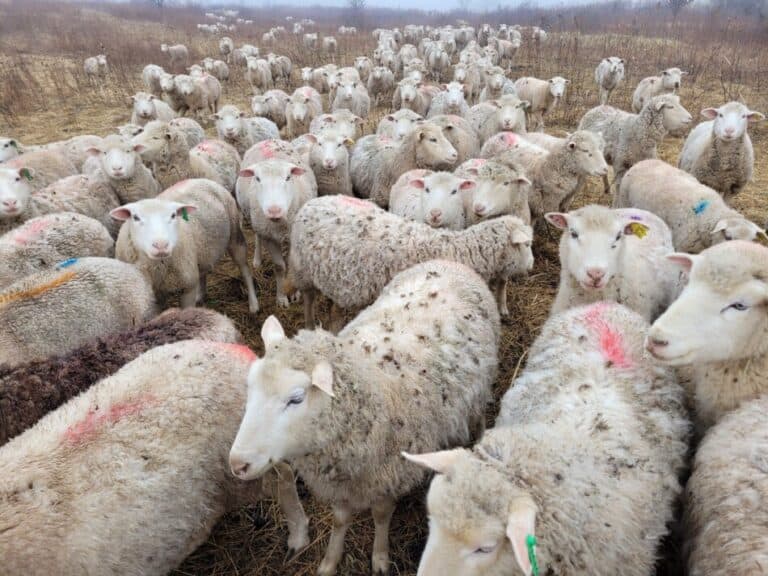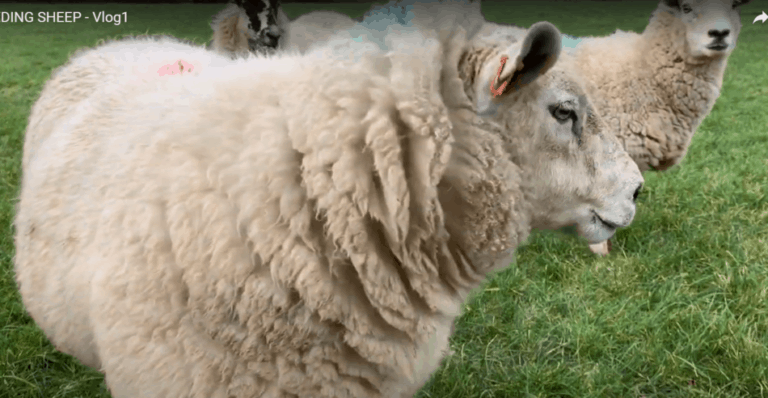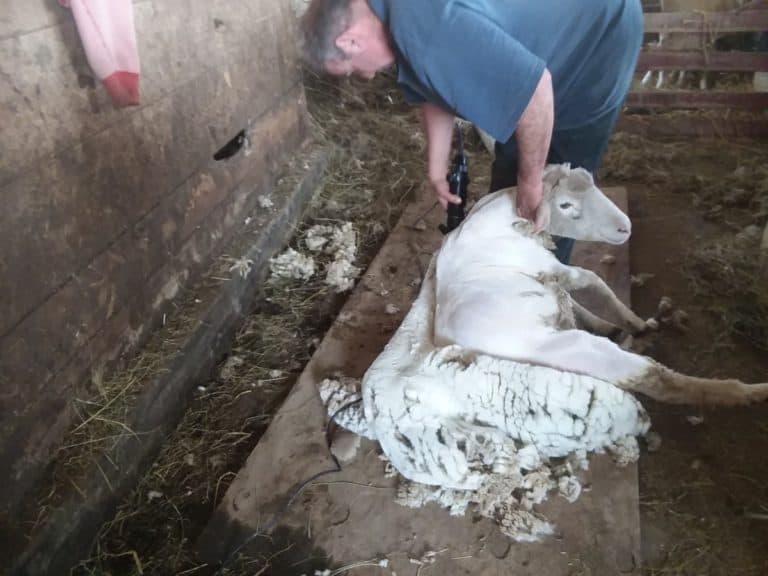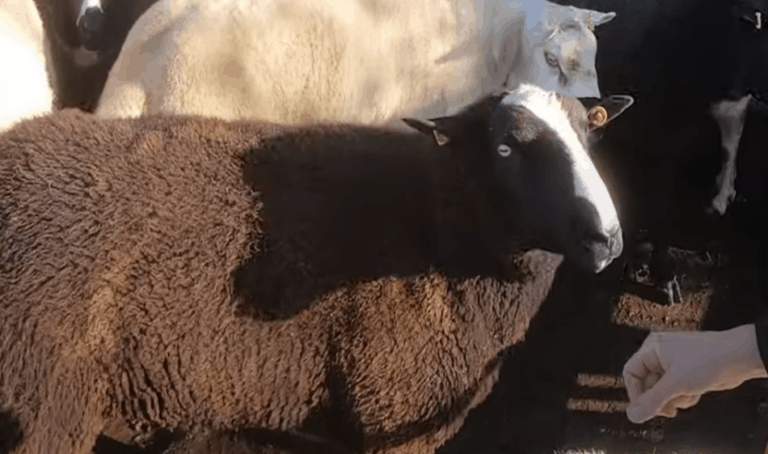When To Shear Sheep: Some Things To Consider

Wondering about the best time to shear your sheep?
Actually, sheep can be shorn any time of year, so we want to time shearing to do what is best for the sheep.
The best time to shear sheep is in the spring before lambing for most sheep, however, breeds with extra long wool growth per year, like Cotswold, need shearing twice a year to keep the fleece workable.
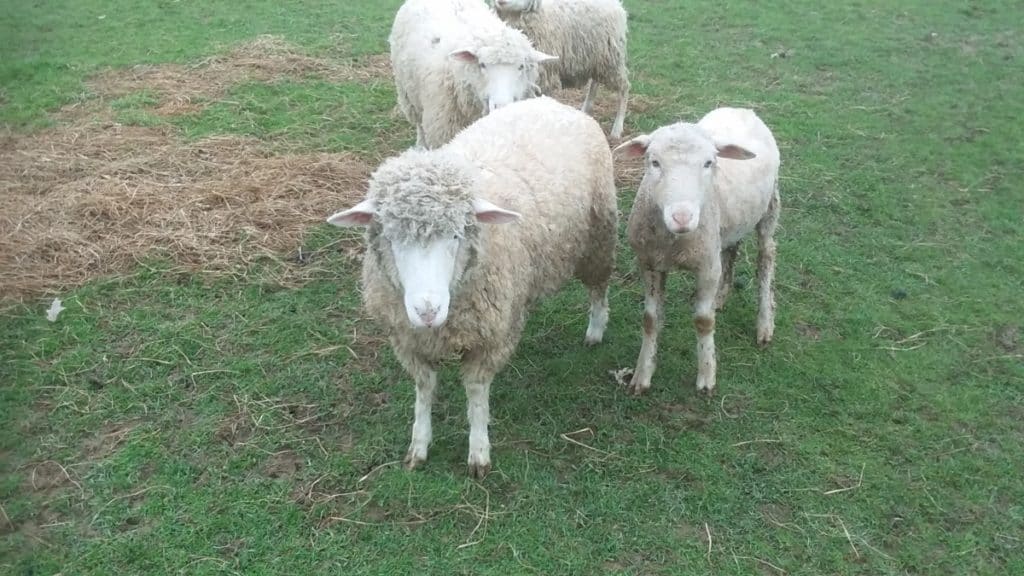
Consider the picture above: these two ewe lambs are about the same age and size, the only difference is the one on the right has been shorn!
Shearing can be a shocking transformation!
Sheep can be shorn anytime of the year, and there are various reasons for needing to shear sheep at times other than the spring.
Sheep Profits goes over the numbers for raising your own flock, if you are interested in learning more.
Some farms do an accelerated lambing system, which means they lamb at different times of the year, not just in the spring.
They would still be shearing before lambing, it just is not necessarily in the spring.
Shear sheep before lambing
Generally, sheep are shorn in the spring before they have a lamb.
This gives the ewe (female sheep) a nice clean short covering of wool that makes it easier for her to move around inside the barn and keeps her more comfortable since she doesn’t get as hot.
Around here, Ohio, most shearing is done from February thru May, depending upon when the ewes will lamb and the weather.
If shearing is done in the fall it would be done in September or October to give the sheep time to grow in a bit of a wool coat before the weather gets really cold.
For sheep that are kept inside, shearing time and wool growth before winter really doesn’t matter a lot.
Being in the barn will keep out the drafts and the heat from the rest of the flock will keep her warm if it is cold.
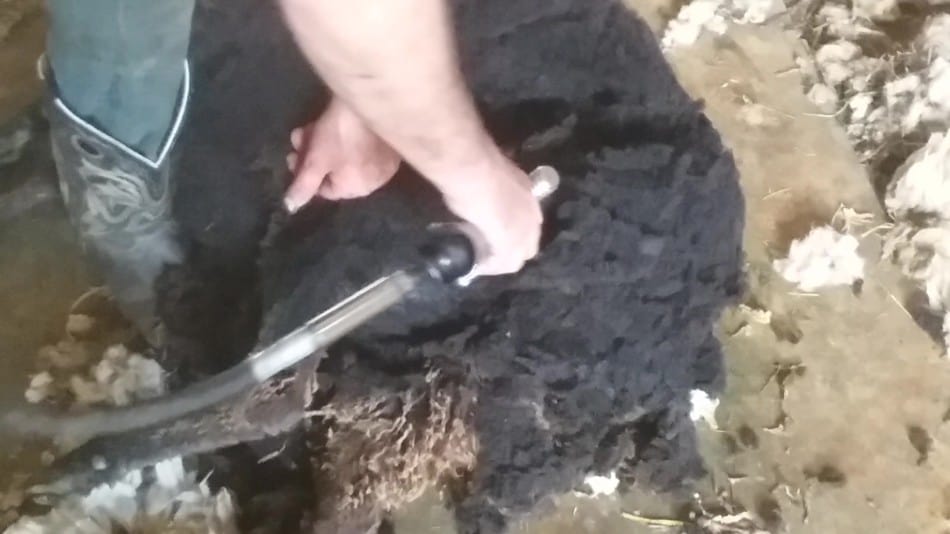
Shorn ewes are comfortable
Shearing the ewe before lambing is best for the ewe since it makes her more comfortable before lambing by removing the heavy coat of wool.
Lambing is a stressful event for a ewe and stress can cause a weak point to develop in the fiber of the wool.
From a wool quality standpoint shearing before lambing harvests the fleece at peak condition and length.
As far as the lambs go, sometimes lambs can get confused as to where the udder is located and what to suck on.
If there are any dried up danglers of mud or manure hanging off the underside of the ewe.
Having the teats be the only likely option eliminates choices and gets the lamb to nursing quickly.
Shear on lower humidity days
While sheep can be shorn any time of the year and on any day, wet or dry, certain weather conditions work much better than others.
The sheep being shorn at the beginning of this article is a Scottish Blackface, image from The Sheep Game YouTube channel.
Shearing in good weather means that the shearing will go faster per ewe, which is easier on the sheep as well as the person, since the blades will be more efficient when cutting the wool fibers.
Also, the blades will stay sharp longer, so we can shear more sheep per set of blades.
Once the blades stop working well they need to be switched for another set and set aside with in the group to be sharpened before used again.
For more details on the blades used to shear, read my article Sheep Shearing Equipment For Beginners.
Ideally, the sheep will be dry, for sheep that are out on pasture this means they have not been rained on for a day or two.
A day that is lower in humidity will make the shearing go faster since humidity is moisture and moisture gums up the wool and the clipper blades so they dull out faster.
Shearing does not hurt the sheep
Shearing does not hurt the sheep. I think of it as being like you going to the dentist or doctor.
It doesn’t hurt but you still worry about it a little bit (at least I do) and would rather be somewhere else.
Why Shearing Sheep Is Absolutely Necessary For Sheep Welfare is an article that lays out the reasons for shearing, if you are interested.
Shearing is actually the ideal time for evaluating the health of the sheep since it is so easy to give her a good look over to spot potential health problems as she is being shorn.
With all of her wool on, it is much harder to see things like body condition (weight) especially for the new flock owner.
Sheep can get cold after shearing
Sheep can get cold after shearing, so this is why choosing the time of year is important if the sheep are outside.
It will take a few weeks for the wool to grow in enough to give her some weather protection, which is why outside sheep get shorn as the weather is getting warmer not in the middle of winter.
The other important thing to remember is that sheep will also have a layer of fat insulation on their bodies, just like any other animal, so they have the energy to burn to keep warm if needed.
They can also increase their food intake to get more calories to burn, but won’t need to if they are in good condition and shorn at an appropriate time.
Not shearing makes ragged wool
Some sheep will partially shed/rub off their fleece if they are not shorn. You will see strands of ropey like wool bits hanging off them like streamers.
Even with all this rubbing they will not be able to get all of the wool off.
More commonly, the wool will just keep growing longer and she will have more and more weight to carry around.
A big unshorn fleece is the ideal trap for all kinds of brambles and sticks and burrs.
These will grab on to the wool then work in towards her skin and start poking and rubbing as she moves.
Slick shorn (fleece cut short all over her body) sheep don’t have anywhere for debris to cling to.
Shearing is important for flock health
Shearing is important since it helps to keep the ewe in top condition. She feels better and can move more freely.
Unshorn sheep get tangled up in brambles.
Just a few weeks ago I noticed a ewe that did not come in with the rest of the flock and went out to see what was happening.
She was grazing around a multiflora rose and got a few of the branches tangled in her fleece so she was stuck there.
Nothing was wrapped around her holding her there it was just the pokey stems grabbing the wool. Once the ewes are shorn this doesn’t happen.
The other main reason to shear is to prevent fly strike. Fly strike is a maggot infestation on the sheep.
It is usually at the back end near the tail but really it can happen anywhere on her body. Fly strike is very stressful to the sheep and, to be blunt, disgusting to see.
Sheep that are shorn are much less likely to get fly strike, making shearing worth the effort for this alone.
Related Questions
Do you wash the sheep before shearing them?
No we do not wash sheep before shearing them.
The wool is scoured (washed) at the wool processor or by the person who bought the raw (unwashed) fleece.
Which sheep breed is best for wool?
The best sheep breed for wool depends upon what you want to do with the wool.
If you want to make items that will be worn next to the skin then you need fine wool like Merino.
If you are wanting wool that is easier to learn to spin at home, try something more like Shetland or Romney, which are medium wools known for being beginner friendly.
Maybe you want to make durable rugs, then you need more of a course wool, like Scottish Blackface, that will be able to handle the abuse of being walked on.
